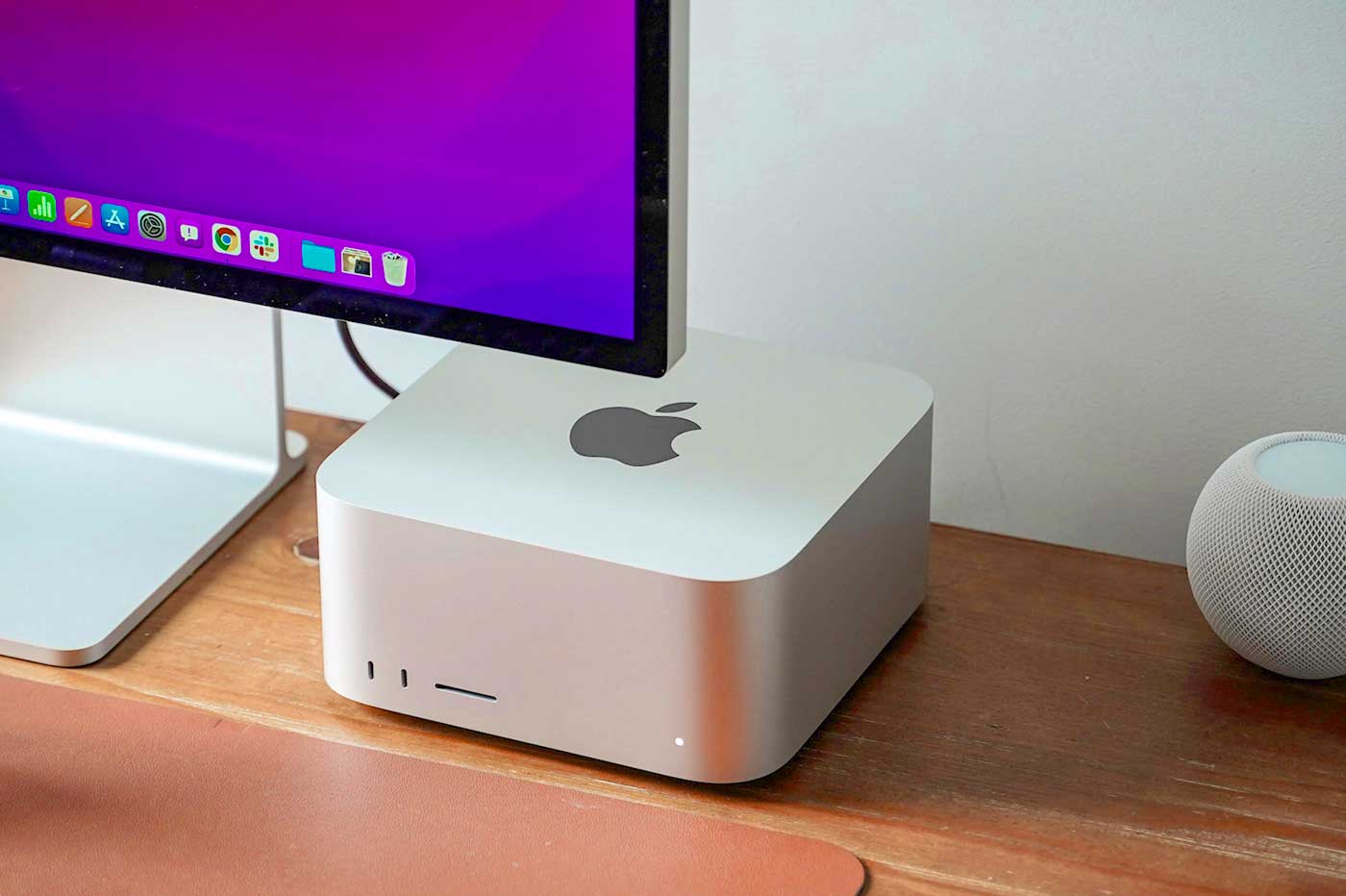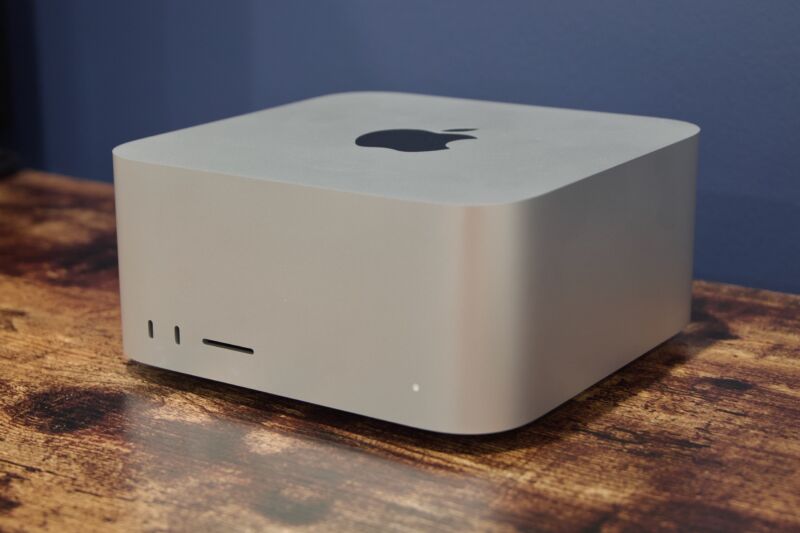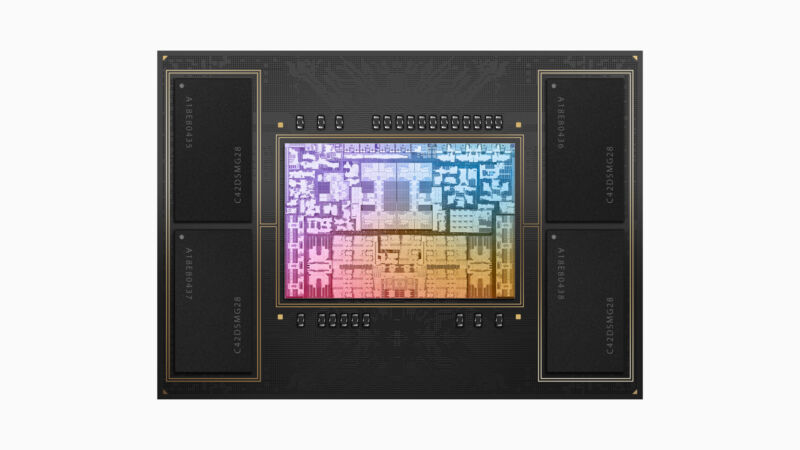-
 chevron_right
chevron_right
Apple met à jour son MacBook Air : puce M3, Wi-Fi 6E et double écran externe
news.movim.eu / JournalDuGeek · Monday, 4 March - 13:33

 chevron_right
chevron_right
Apple met à jour son MacBook Air : puce M3, Wi-Fi 6E et double écran externe
news.movim.eu / JournalDuGeek · Monday, 4 March - 13:33

 chevron_right
chevron_right
M3 Ultra : la surpuissante puce Apple aura des caractéristiques hallucinantes
news.movim.eu / JournalDuGeek · Tuesday, 14 November - 08:00

Apple vient de présenter une nouvelle famille de puces, mais il en manque encore une. La firme peaufine une M3 Ultra qui s'annonce déjà très impressionnante.
M3 Ultra : la surpuissante puce Apple aura des caractéristiques hallucinantes
 chevron_right
chevron_right
Apple says it has no plans to update the 27-inch iMac with Apple Silicon chips
news.movim.eu / ArsTechnica · Monday, 6 November - 16:29 · 1 minute

Enlarge / The original 27-inch 5K iMac, introduced in 2014. (credit: Andrew Cunningham)
Apple's 27-inch iMac was one of the few Intel Macs (along with the iMac Pro) to be discontinued with no direct Apple Silicon replacement . It used to be Apple's mainstream workstation Mac, but in the Apple Silicon era, that role has been filled by the Mac mini and Mac Studio , instead. The 24-inch iMac, recently updated with a new M3 chip , is a smaller machine focused more on casual day-to-day computing.
Some 27-inch iMac users have been holding out for a true large-screened iMac replacement. But Apple threw cold water on those hopes in a statement given to the Verge (and later reiterated to Ars), where it said definitively that it was not working on an Apple Silicon version of the 27-inch iMac. Users of 27-inch Intel Macs should either move to the 24-inch iMac or to the M2 Pro Mac mini or the Mac Studio if they need more performance, according to Apple.
Eternal optimists still holding out hope for a new large-screened iMac might note that Apple specifically mentioned the 27-inch iMac, which doesn't necessarily preclude the possibility of an even-larger iMac in the 30-something-inch range. But given Apple's usual aversion to discussing its future plans, an explicit denial does hit differently than a total lack of comment or a boilerplate "Apple doesn't comment on future plans."
 chevron_right
chevron_right
Review: Apple’s 16-inch M3 Max MacBook Pro crams Ultra-level speed into a laptop
news.movim.eu / ArsTechnica · Monday, 6 November - 14:00

Enlarge / Apple's 16-inch, M3 Max-powered MacBook Pro. (credit: Andrew Cunningham)
The next year or two will be a turning point for people who bought into the last few generations of Intel Macs. AppleCare+ subscriptions are going to expire, batteries will begin to lose a noticeable amount of capacity, software updates and security fixes will gradually dry up , and normal wear-and-tear will slowly take its toll.
Every new generation of Apple Silicon Mac is another opportunity for Apple to get those people to update. Which may or may not help to explain why Apple is introducing its new M3, M3 Pro, and M3 Max MacBook Pros less than 11 months after releasing the M2 versions.
Like the early 2023 MacBook Pros, these late 2023 models are iterative improvements to the 2021 redesigns . They keep the things that made those laptops such a big improvement over the late-model Intel MacBook Pros while adding just a little more performance and one or two other minor improvements to entice people who still haven't made the Apple Silicon switch.
 chevron_right
chevron_right
Apple’s M3 iMac still starts at $1,299, still doesn’t replace the 27-inch model
news.movim.eu / ArsTechnica · Tuesday, 31 October, 2023 - 00:30 · 1 minute

The new iMac comes in the same seven colors as the old one. [credit: Apple ]
NEW YORK—The new MacBook Pros are the biggest news from Apple's October Mac event, but one other model got a long-overdue refresh, too—the 24-inch iMac, most recently refreshed with an Apple M1 processor in June 2021 .
The new iMac is available for order today, and the first ones will arrive on November 7. The base model, which includes an M3 with an 8-core GPU, 256GB of storage, two Thunderbolt ports, a non-Touch ID keyboard, and 8GB of RAM, starts at $1,299. An upgraded version with a 10-core GPU, a power brick-mounted gigabit Ethernet port, two additional USB-C ports, and a Touch ID keyboard starts at $1,499. Those prices are $1,249 and $1,399, respectively, for education users.
The most important upgrade—and really the only one of note—is an upgrade to the new M3 chip. Because it was the only Mac to totally skip the M2, the new iMac hops forward two generations at once. Apple says that the M3's four high-performance CPU cores are up to 30 percent faster than those in the M1, and that its four high-efficiency CPU cores are as much as 50 percent faster. Apple says that the 10-core GPU in the M3 is up to 2.5 times faster than the M1, and that its 16-core Neural Engine is up to 60 percent faster.
 chevron_right
chevron_right
Mac, M3, iPad : que va annoncer Apple lors de son keynote du 31 octobre ?
news.movim.eu / JournalDuGeek · Wednesday, 25 October, 2023 - 14:00


Apple confirme la tenue d'un événement le 30 octobre (31 octobre en France) prochain. Les Mac devraient être au centre de l'attention.
Mac, M3, iPad : que va annoncer Apple lors de son keynote du 31 octobre ?
 chevron_right
chevron_right
Report: Apple’s expected M3 MacBooks may not be coming this year
news.movim.eu / ArsTechnica · Monday, 11 September, 2023 - 17:28

Enlarge / Apple's 15-inch MacBook Air. (credit: Andrew Cunningham)
For most of the last year, the rumor mill has indicated that the first wave of Apple’s M3 Macs will be hitting sometime this fall —perhaps in October, a month Apple has often used for iPad and Mac announcements that can’t be crammed into its iPhone and Apple Watch-focused product events in September.
But according to reliable Apple analyst Ming-Chi Kuo, the company won't launch those models before the end of the year . Kuo didn't share specifics, but he has sources inside Apple's manufacturing supply chains that often give him reliable information about the company's plans.
Apple's timing shifted similarly last year when M2-based MacBook Pro and Mac mini designs that were apparently intended for late 2022 launched in January 2023 instead.
 chevron_right
chevron_right
Developer logs reveal more details about next-gen Apple M3 and M3 Max chips
news.movim.eu / ArsTechnica · Tuesday, 8 August, 2023 - 16:48 · 1 minute

Enlarge / The Mac Studio, a likely recipient of a new M3 Max chip. (credit: Andrew Cunninghan)
Apple's M3 processor generation is continuing to take shape thanks to what seem to be unreleased internal test devices that are showing up in the analytics data of third-party app developers. Back in May , Bloomberg's Mark Gurman reported on the specs of what appeared to be a new M3 Pro processor. Yesterday, Gurman revealed the specs of a new M3 Max , which has a total of 16 CPU cores and 40 GPU cores, plus 48GB of memory (likely not the maximum that will be available since the current MacBook Pros can go up to 96GB).
The current M2 Max, found in the 16-inch MacBook Pro and the Mac Studio, tops out at 12 CPU cores and 38 GPU cores. Gurman says that all four of the M3 Max's extra CPU cores should be large, high-performance cores rather than smaller efficiency cores; both kinds of cores boost speeds, but performance cores are obviously more useful for high-end workloads.
Earlier this week, Gurman also noticed a new base-model M3 chip that continued to use 8 CPU cores and 10 GPU cores, just like the current M2. This chip would still be a speed upgrade from the M2, but it would have to rely on architectural improvements and clock speed boosts rather than extra cores. The original M1 used eight CPU cores as well, also split evenly between high-performance and high-efficiency cores.
 chevron_right
chevron_right
Report: Like Intel’s latest CPUs, Apple’s M3 will lean on small cores to boost speed
news.movim.eu / ArsTechnica · Monday, 15 May, 2023 - 16:01 · 1 minute

Enlarge / Apple's M2 Pro chip. Unsurprisingly, Apple is already testing its replacement. (credit: Apple)
Many Apple Silicon Macs still haven't made the jump from the M1 generation to the M2, and the Mac Pro is still using an Intel processor, but some app developers have already begun to see signs that Apple is testing members of the M3 chip family.
Bloomberg's Mark Gurman relays that the M3 chip in question has a 12-core CPU with six high-performance cores and six high-efficiency cores, plus 18 graphics cores and 36GB of memory. This all suggests the chip is some kind of M3 Pro, like the kind you'd find in a 14- or 16-inch MacBook Pro or a high-end Mac mini; the current M2 Pro uses six high-performance CPU cores, four high-efficiency cores, and 16 GPU cores. We can only guess at the specs of the regular M3, the M3 Max, or the M3 Ultra.
Though Apple has (mostly) ditched Intel, the two companies have taken a similar approach to improving their processors' performance in recent years: lean on architectural upgrades and small clock speed boosts to improve single-threaded performance on the big CPU cores while adding an increasing number of small high-efficiency cores to bolster multi-threaded performance for pro-level workloads that can use every CPU core you throw at them.